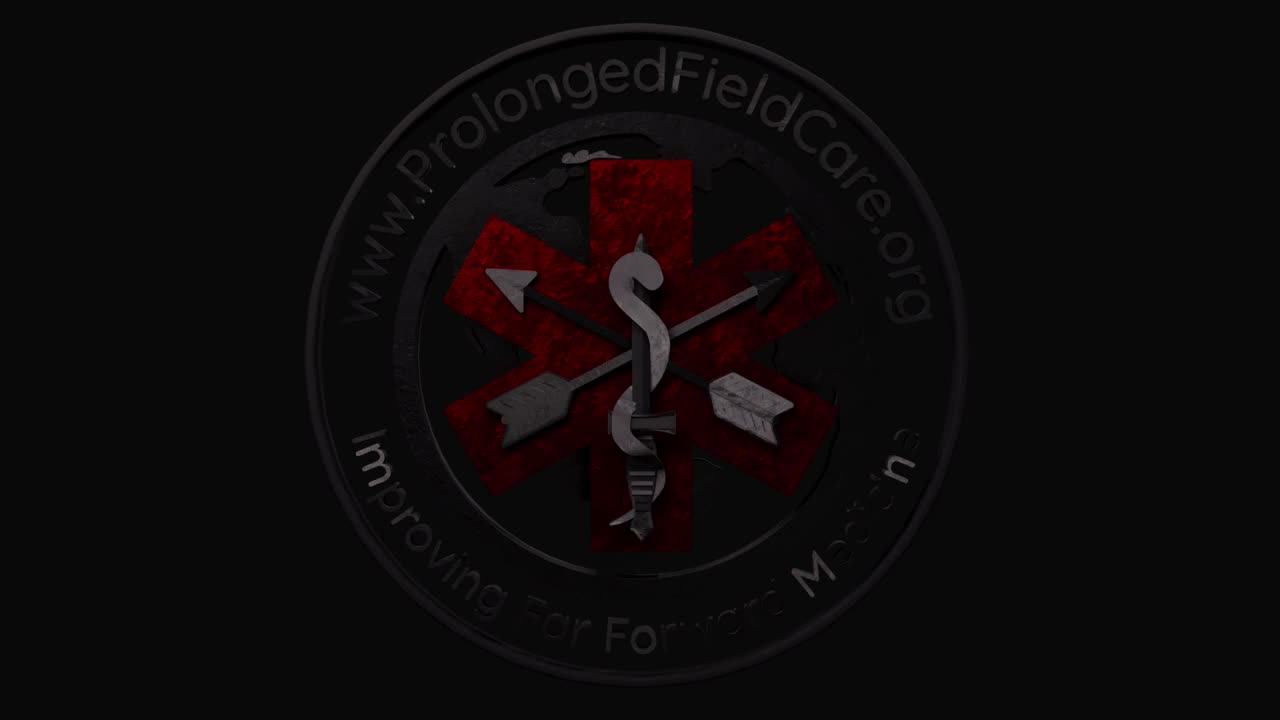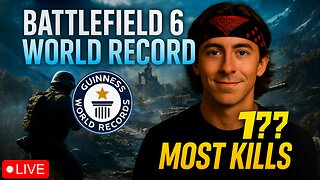Premium Only Content

Prolonged Field Care Podcast 47: Andy Fisher And His Damage Control Resuscitation For PFC
So what is different than what we already have in the THOR recommendations, the JTS DCR clinical Practice Guideline and the Ranger Regiment TDCR? No hextend?! Calcium with the 1st unit of blood?! TXA slow push?! What if the patient is not responding to resuscitation efforts? This is a guideline truly written for the Medic working despite lack of help or resources in an austere environment…
When reviewing and editing this evidence-based consensus guideline there were lengthy discussions about the realities of some of the issues mentioned above. One of the biggest questions came when discussing TCCC because there are slight differences with the CoTCCC guidelines which were written specifically for a medic treating a patient sequentially in the combat environment.
I will attempt to explain the thought process of the group of authors as I understood the conversations and email chains in order to help you make a better decision for your practice. That fact alone makes this guideline different. It is specifically written for an independent duty medic or corpsman who has the flexibility to make decisions about the care based on available evidence for the patient which may or may not yet exist in which case expert consensus was used.
Guidelines for medics must be written in a linear manner because they do not merely manage the care of a patient as part of a large team working together, they manage, prioritize, and physically complete each task one after another. Training other team members to complete certain tasks can greatly assist the medic. Gains in the quality of care and outcomes can come from optimizing a dedicated trauma system. When that system is a single person working problems in series, the variables must be looked at in a sequential manner because that is how they are performed. The administration of TXA comes to mind when talking about these minute changes.
TXA Slow Push:
TXA is not the cornerstone of austere resuscitation, administration of blood is. Since the CRASH2 TXA trial results and per manufacturer recommendations, it has been recommended that TXA be given slowly over 10 minutes so as to not cause transient hypotension. The provider should absolutely be aware of this possibility no matter how small of a chance it may have of occurring. Once aware and taken into account, a decision can be made for the current situation. Do they have time to get out an IV bag, reconstitute the TXA, Inject it into the bag, start a new IV/IO site, hook up the line, count the drips, adjust the drip rate multiple times and then check on the drip rate multiple times so as to make sure that 10 minutes is vehemently adhered to? Does this bring the risk of transient hypotension to absolute zero or does it merely reduce an already small chance? This guideline gives the medic the same guidance and recommendations from conclusions of the original study with the caveat not to waste time they or the patient may not have due to the situation or environment. If that IV line is already the second line, it may be needed for other adjuncts including calcium, pain control, sedation, antibiotics, antiemetics, etc. 10 minutes is a long time when someone is writhing in pain, vomiting, mentally altered while bleeding out. If on the other hand, a patient arrives to your aid station with 2 IVs, blood hanging, with appropriate sedation and analgesia, there is likely time to adhere to the slow drip over 10 minute recommendation. Again, it is the prerogative of the independant duty medic or corpsman to weigh the risks versus gain.
NO Hextend and Hetastarch:
The absence of Hextend or hetastarch is the next thing likely noticed after the concession of the TXA alow push. We have made sure that the non-physician has a range of options to provide adequate volume for their trauma patient. Blood products are available via freeze dried plasma, cold stored low titer type-O whole blood delivery from the ASBP, field transfusion from a previously identified type-O low titer donor or a type specific donor. The goal is not to merely raise the blood pressure but to do so with physiologically beneficial products which contribute to oxygen delivery, clotting and everything else the blood organ does.
On September 12, 2013 the US Food and Drug Administration added a black box warning to Hydroxyethyl starch (HES). Here is a summary of the warning for your consideration:
Type O, Low Blood Program
All O donors are identified using MEDPROS. They are then given a brief about the program. Then they meet with the ASBP. They are screened, get second ABO, TTD, and titer testing IgM anti-A/B. All results are posted in TMDS. Our med readiness person downloads all ROLOs for the medics and providers. Then they can get an ID. Before deployment they get TTD testing.
Early Calcium:
Calcium is proving to show some benefit to trauma patients who are likely hypocalcemic before any blood has even been administered.
-
 DVR
DVR
Cringe Panda
3 hours agoCringe Panda Gaming Stream
7.39K -
![Aug Day #10 of RCP 🤟 [FR/ENG] 🫶 Some Fortnite then Demos then continue on StarRupture 🫶 🤟](https://1a-1791.com/video/fww1/81/s8/1/O/0/c/-/O0c-y.0kob-small-Aug-Day-10-of-RCP-FRENG-Som.jpg) 4:24:45
4:24:45
Deaf Gamer Girl
5 hours agoAug Day #10 of RCP 🤟 [FR/ENG] 🫶 Some Fortnite then Demos then continue on StarRupture 🫶 🤟
13.2K -
 6:59:09
6:59:09
Reidboyy
9 hours ago $4.41 earnedBattlefield 6 #1 POV (Watch and Learn)
55.8K1 -
 2:25:42
2:25:42
TheSaltyCracker
3 hours agoThey So Mad ReEEeStream 8-10-25
63.8K160 -
 2:27:39
2:27:39
vivafrei
12 hours agoEp. 276: Epstein Subpoenas &Trump E.O! Bondi Offers Reward for Maduro Arrest? MADNESS IN CANADA!
94.7K94 -
 2:23:55
2:23:55
Barry Cunningham
7 hours agoPRESIDENT TRUMP IS NOT PLAYING AROUND...AND THE LIBNUTS CAN'T STOP HIM!
54.7K52 -
 22:02
22:02
Stephen Gardner
12 hours ago🔥JUST IN: Trump BETRAYAL plot EXPOSED!
75.6K250 -
 38:32
38:32
The Why Files
21 days agoThe Real CIA Vol. 1: 693 Pages of Secret Crimes
87.7K59 -
 49:12
49:12
MattMorseTV
10 hours ago $12.73 earned🔴Zelenskyy is NOT HAPPY about Trump’s NEW DEAL.🔴
94.1K134 -
 1:03:49
1:03:49
Warren Smith - Secret Scholar Society
4 days ago"You are on the brink" - My Conversation with Nick Fuentes
69.7K61